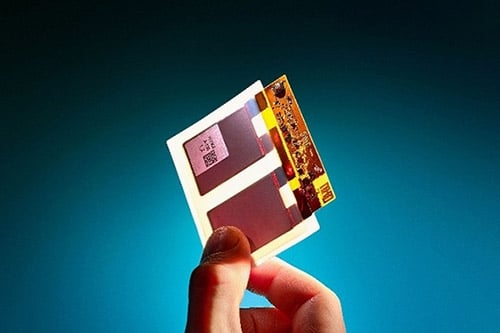Nodle is a small company with a big vision: to connect and verify our reality. With trillions of devices coming online, Nodle provides a programmable layer to connect people, devices and data. And it uses that infrastructure to certify data such as images, video, and AI decisions onto a blockchain. This allows companies to be sure that data isn’t faked or modified after it is collected – bringing real trust to applications and services based on edge computing.
Nodle started out as a decentralized network for connecting Bluetooth® Internet of Things (IoT) devices. Any smartphone could become a node in this network and participate in its operation simply by downloading the Nodle app. The company then realized that its key value to customers was, as cofounder Garrett Kinsman puts it, "in verifying reality".
"Ultimately having the root of trust at the edge is important for a host of IoT-related applications and services. And that’s where our web3-enabled NanoComputer comes in," Kinsman explains.
The Nodle NanoComputer 1 (N1) is the world’s first eco-friendly nanocomputer and features a novel zinc-based battery chemistry that has a 92% lower greenhouse gas impact than the lithium ion pouch cells typical in smartphones. The N1 was created to make assets programmable in the Nodle Chain, essentially making the asset findable by any authorized node in the Nodle network. It was initially designed for logistic applications. Imagine shipping pallets for perishable food that monitor temperature, motion and humidity, then compute that data at the edge. However, thanks to its versatility, the N1 is already proving its worth in a wider variety of services.
"Today, one of our largest customers is an insurance product that uses Bluetooth devices to locate and recover stolen vehicles across Europe. If a vehicle with a Bluetooth tag is marked as stolen, the Nodle network of smartphones can securely search for its Bluetooth ID. The NanoComputer ultimately reduces the cost to deploy such a solution, and allows programmability at the edge," says Kinsman.

The Power of the Small
The N1 NanoComputer is based on the Renesas DA14531 SmartBond TINY™ – the world’s smallest and lowest-powered Bluetooth 5.1 system-on-chip.
"We were looking for a true minicomputer. The Renesas solution we chose supports encryption, multiple sensors and low-power operation. This is in stark contrast to classical Bluetooth devices used today that are not very smart and cannot be easily programmed," says Kinsman.
According to Kinsman, integrating the DA14531 into Nodle’s design was straightforward. “Renesas has a robust ecosystem behind it, along with a strong track record of reliability and performance. They also offered more assistance and engagement than competing chip vendors, which helped us produce a product and experience that is best in class. But perhaps more importantly, Renesas takes small start-ups seriously and that is very rare in the semiconductor world.”
"The world is at a transition point: Computing is evolving from devices like the Raspberry Pi into a truly hyper-connected reality with the NanoComputer. The Renesas chipset was essential to the development of the NanoComputer. Its cost, power efficiency and robustness allow us to go beyond our current understanding of low-power edge computing," Kinsman concludes.
